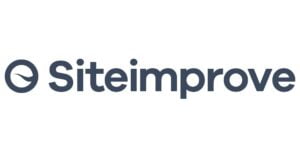Get started with your website’s accessibility with accessiBe’s easy-to-use features and technology.
Quick links

ADA Compliance Level AA Explained
If you’ve reached this guide, you’ve probably heard about the Americans with Disabilities Act, or ADA, enacted in 1990.
This vital Act was created to ensure that everyone has equal access to places of public accommodation—websites included—regardless of whether they’re disabled.
If you’ve recently begun exploring the concept of web accessibility, or you’ve been the unlucky recipient of an ADA-related demand letter, you’ve reached the right guide.
Along with covering the basics of ADA and WCAG, we will also explain the different levels of compliance and how to achieve them using tools such as UserWay and accessiBe.
- Understanding WCAG - What's it about?
- The 3 Compliance Levels - Things to remember
- How to Achieve WCAG Level AA - Key Steps
- Wrapping up - Summary
If you are unsure if your website is accessible, check the status of your website using our free accessibility checker below:
Accessibility Checker
Scan your website for accessibility related issues for free
Top Recommended Accessibility Tools
Before we get into some of the quick wins you can follow to achieve Level AA, let’s look at some top recommended accessibility tools.
 | |||
| Existing Customers |     |     |    |
| Technology | Fully automated web accessibility solution | Fully automated web accessibility solution | Automated |
| Compliant in Countries | |||
| Compliance | WCAG, ADA, Section 508, AODA | WCAG, ADA, Section 508, AODA | WCAG, ADA, Section 508, AODA |
| Prices | Starts at $49 per month | Starts at $49 per month | Starts at Flexible |
| Partner Program (for Web Agencies) |
|
|
|
| Customer support | Email only | Email only | |
| Free Demo |
Yes Free demo available |
Yes Free demo available |
No Free demo not available |
| Free Trial |
7 day free trial No credit card needed |
10 day free trial Credit card required |
1. accessiBe
accessiBe is known for its simplicity and the speed at which it can identify accessibility issues on your website with the help of AI technology. Using this tool will ensure your site is compliant with ADA, WCAG, and Section 508 requirements. For users who would like to try the tool before investing in it, a 7-day trial is available. For more information, you can read our in-depth accessiBe review right here.
 accessiBe
accessiBe- WCAG
- ADA
- Section 508
- Account managers available to guide you through the product, pricing, and any questions you may have
- Fast turnaround with a 5 min installation, and 48-hour compliance process
- 100,000+ clients use accessiBe including legal and government organizations
- Includes accessibility statement and certification
- Built specifically for websites and small and medium-sized businesses (SMBs)- some web apps might not be compatible




2. UserWay
Another automated, AI-powered tool that comes highly recommended is UserWay. Once installed, your site will be compliant with Section 508, ADA Title II, and WCAG 2.2 requirements. Your website visitors will also have access to a UserWay panel, which will allow them to modify the front end of your website to create a more personalized experience as a disabled user. Access our full UserWay review here for more information.
- WCAG
- ADA
- Section 508
UserWay provides users with advanced website accessibility solutions, ensuring ADA compliance without changing or compromising your website’s existing code.
- Quick and easy process
- 1M+ website installations
- Affordable cost & dynamic pricing
- Multiple solutions and services offered
- Customer support is lacking




What are ADA Compliance Levels?
1. Level A is the most basic conformance level in web accessibility. It probably also means you’re not fully compliant with ADA requirements.
2. Level AA is what website owners should strive for. You meet most WCAG standards and ADA requirements and don’t need to compromise on website aesthetics and functionality.
3. Level AAA is the highest level of conformance. However, it’s also the most restrictive regarding your website’s interactivity, affecting your design and functionality. It’s not recommended that you conform to this level.
Unpacking WCAG a Little Further

Before we delve further into how you can achieve Level AA, you must understand the Website Content Accessibility Guidelines (WCAG) basics.
Like many other global disability acts and policies, certain sections of the ADA are based on the WCAG. The WCAG refers to the three different compliance levels that websites can achieve to adhere to ADA laws.
Developed by the World Wide Web Consortium, this massive 80-page document is divided into 12 main guidelines, each containing smaller sections that apply to the different compliance levels (A, AA & AAA).
The WCAG covers common online issues affecting those with disabilities, including difficulties operating websites and viewing content.
WCAG 1.0 was the first version of these guidelines and was launched in 1999. Today, websites need to follow WCAG 2.2, which is the latest version rolled out in 2023.
One aspect that hasn’t changed between WCAG versions is the four principles it is based on:
Regardless of how a user chooses to engage with a website, they should be able to easily perceive what the website is about. Whether a user needs to zoom in on your content or can’t view images, all your content still needs to be perceivable.
Online users browse the web in different ways, and as a website owner, you need to cater to these different preferences and requirements. Elements on your site should be operable with a mouse, only a keyboard, or using voice commands.
How easy is it for users to understand your website? Is it well-structured and written in easy-to-understand language? Would someone know how to complete a form on your site? These are all questions linked to how understandable your site is.
The final principle is linked to how easily your site can be accessed on multiple browsers and devices.
Three Levels of Compliance

Before we begin the discussion about level AA, let’s mention the different levels of compliance.
The WCAG is designed with three levels to cater to different situations.
While most accessibility standards only have one conformance level, some website components need a higher level of accessibility.
Thus, the W3C developed three WCAG conformance levels.
- Whether or not digital assets are made accessible by assistive technology
- The ability to meet the success criteria with a range of content types and topics
- How reasonable would it be to meet the success criteria
The important thing to remember is that level AAA is the highest conformance level.
However, the average website doesn’t need to meet these requirements.
Here are some things to remember when striving for a conformance level.
Level A
Level A conformance has a minimal effect on website accessibility.
While this level enables screen readers to access a website, it doesn’t help your website comply with DOJ or lawyers’ standards.
Level A is the most basic conformance level in web accessibility.
If you only comply with Level A, you’re most likely non-compliant with the ADA, creating barriers for disabled users and customers.
Level AA
Level AA gives you medium conformance, but this is what most businesses strive for.
This level meets Level A’s criteria and more while allowing you to choose a flexible design for your website.
Level AA is not too light, nor does it restrict you from making an aesthetically pleasing website.
Level AAA
Level AAA is the highest level of conformance.
However, this level is the most restrictive regarding your website’s interactive components.
Thus, your site’s design and functionality might be affected.
Additionally, the W3C doesn’t recommend conforming to level AAA.
It is because some content cannot satisfy all level AAA criteria.
Simply put, some requirements may be difficult to attain.
How to Achieve WCAG Level AA

Now that you better understand the ADA, WCAG, and different compliance levels, let’s get into how you can get your site to Level AA.
This level is the perfect balance between conforming and still maintaining design flexibility.
While some requirements under Level AA can be complex, these will help you attain ADA compliance and avoid costly demand letters and lawsuits.
- Add alternative text to your images to give them context
- Add transcripts to your video and audio files for users with visual and hearing impairments
- The color contrast ratio on your website should be at least 4:5:1
- Review your navigation to ensure that it’s consistent across all pages
- Make sure that all headings on your site are displayed in a logical order
- Label all forms and accompanying fields accurately
- Provide suggestions that would help a user solve input errors on your site
While these are the most important changes you can make, there are a few more things that you can do to achieve Level AA, which we have outlined in this detailed ADA compliance checklist.
Wrapping Up
By making your website accessible, you are opening it up to over 1 billion people living with disabilities. You are also doing your part to create a more inclusive society.
Achieving Level AA doesn’t need to be complex and it’s certainly worthwhile.
You can find out where your website stands by running a quick scan on the Accessibility Checker.
Found this article helpful? Find more insightful resources below!
Accessibility Checker
Scan your website for accessibility related issues for free


